
The ETOE E3 Pro is a fairly inexpensive projector that aims at offering a cinematic experience to the people that don’t really have the space for a large TV. So, just point the portable device at a wall and you’re good to go.

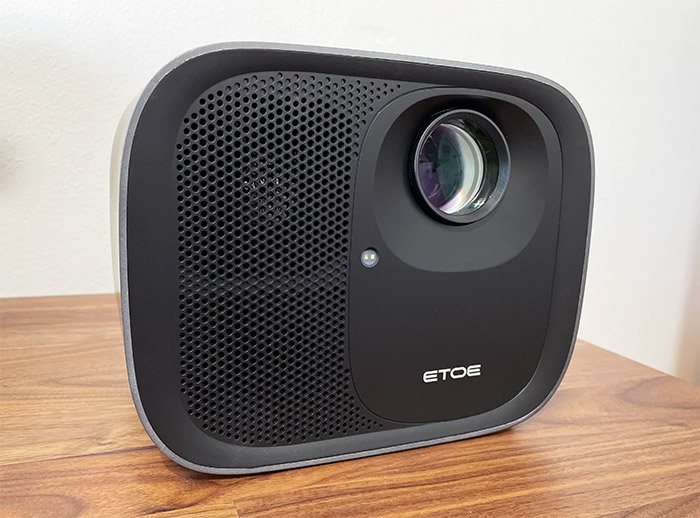
As a result, the ETOE projector is relatively lightweight, weighing 3.57lbs (1.62kg), making it easy to move around. However, it remains to be seen whether the auto-focus and auto keystone correction functions will make frequent location changes hassle-free. Interestingly, the projector comes with a travel case, allowing for easy portability. It’s worth noting that it doesn’t have a built-in battery, but you can use a portable power source like an Allpowers portable battery as an alternative. The projector features an all-around outer shell, with three circular holes on the top for physical buttons. There’s a power button with an LED indicator on one side and a return button on the other. In the middle, there’s a larger D-Pad-style button set: the center is the OK (Enter) button, and the four surrounding arrow buttons are for navigation. According to the product description, short-pressing these arrow buttons adjusts the volume, while long-pressing them enables fast-forward or rewind. However, when I tried adjusting the volume via the physical buttons, it didn’t work.
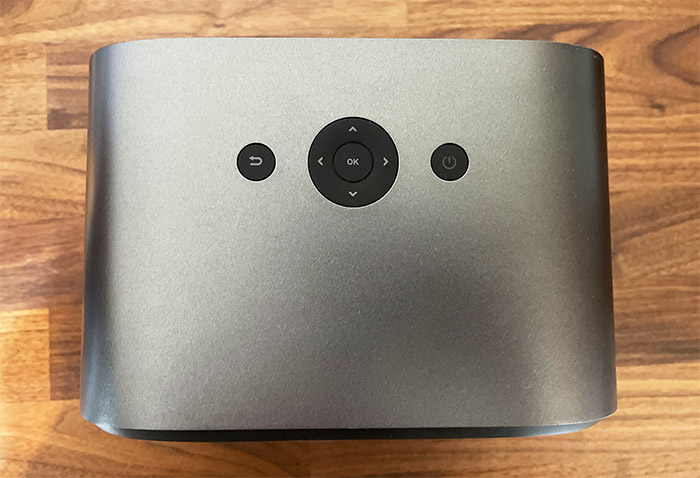
On the bottom of the ETOE E3 Pro, there are four feet equipped with silicone covers to keep the device stable. However, many users may prefer mounting it on a tripod – and fortunately, it comes with a mounting hole to facilitate this setup. While there are no ventilation holes on the sides, the projector features ample ventilation on the rear and front (next to the lens). Are these sufficient for temperature control? The device is equipped with dual fans and a large copper heatsink, which should effectively maintain optimal operating temperatures. To verify its heat performance, we used a thermal camera, and the results are clear to see. A notable design feature of the ETOE E3 Pro is its rear panel: beneath the ports, there’s a section labeled “TV” that can be opened to reveal an Android box connected via USB-C ports.
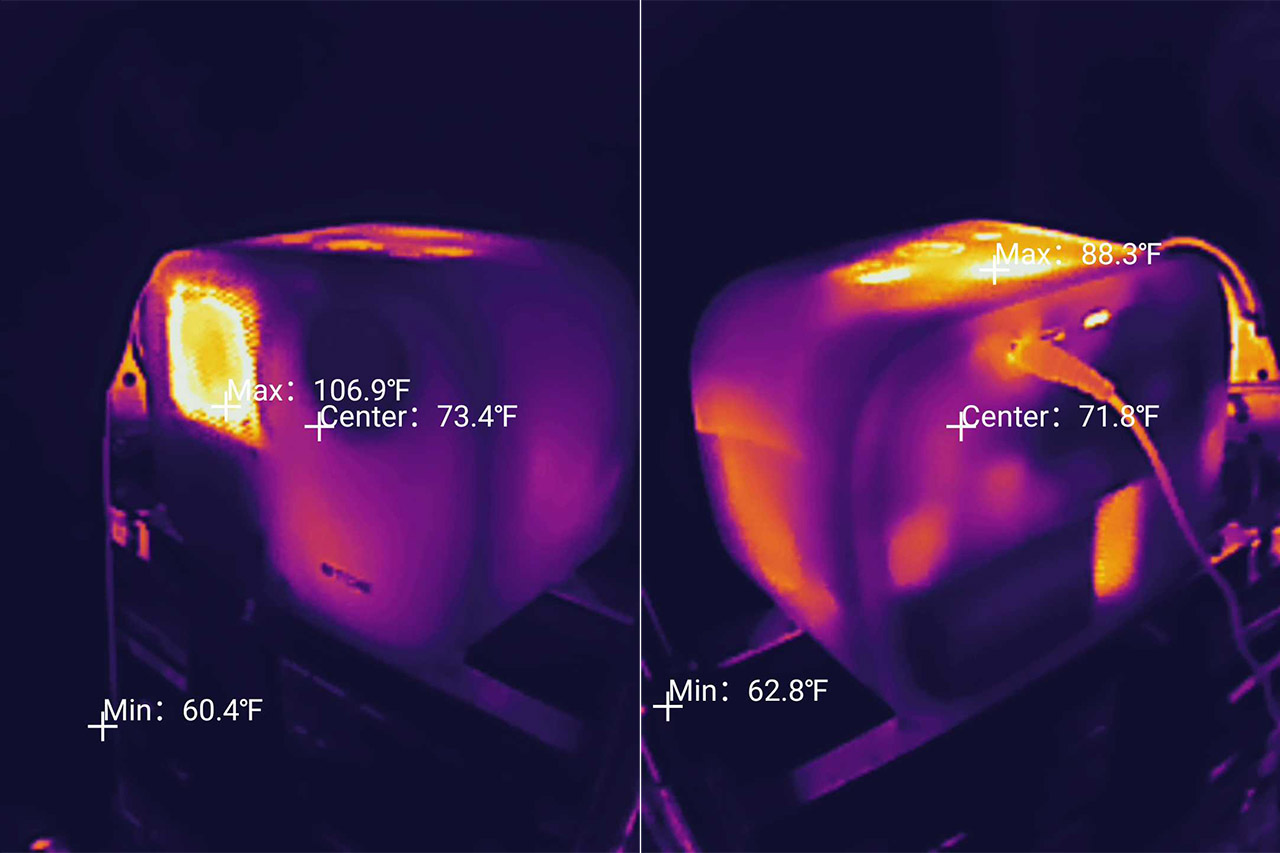
That’s why I highlighted the potential modular design of the device – I’m confident it can be swapped with any other Android box on the market, provided it fits. When it comes to ports, while there aren’t many, the ETOE E3 Pro still covers the essentials: a power port, a USB-A 2.0 port, an HDMI port, and an AUX port for audio systems. In between these ports, the manufacturer has also integrated the IR receiver for the remote control. Through the plastic mesh, you can see two speakers – one facing forward and the other backward – a design very similar to that of the Xidu Philbeam S1. The projector’s lens is slightly recessed in the body. ETOE states that it uses a “fully-sealed dustproof optical engine,” which prevents dust from entering the enclosure and affecting video quality. This might sound trivial, but it’s worth noting that the XIDU projector faced issues precisely because its optical engine wasn’t properly sealed. Next to the lens, there’s a ToF (Time of Flight) sensor, which works by emitting a light beam and measuring the time it takes for the light to reach a surface.
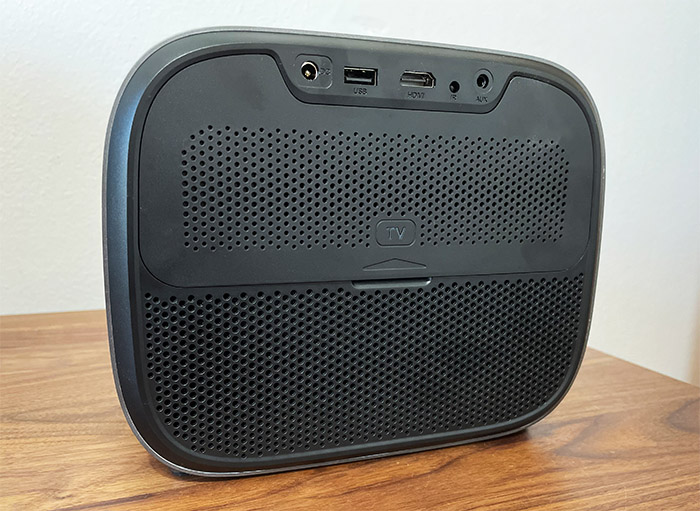
Based on the calculations, the ETOE E3 Pro should be able to accurately auto-focus the picture. It’s an interesting system, but I think a camera-based one would have been a bit better since I have seen it in action on the XGIMI Halo Plus and that object avoidance system was gorgeous. But I guess you can’t have everything at this price point.
ETOE E3 Pro Teardown
Projectors are complicated machines and it’s not easy to disassemble and reassemble them, so I decided to rely on the FCC ID photos. And I was satisfied up until I got a blurry picture of the Mediatek SoC. I could tell that there was 1GB of eMMC storage memory from Samsung (KLM8G1GETF-B041) and the inner components of the Android box, but I wanted to know the optical chip behind the ETOE E3 Pro.
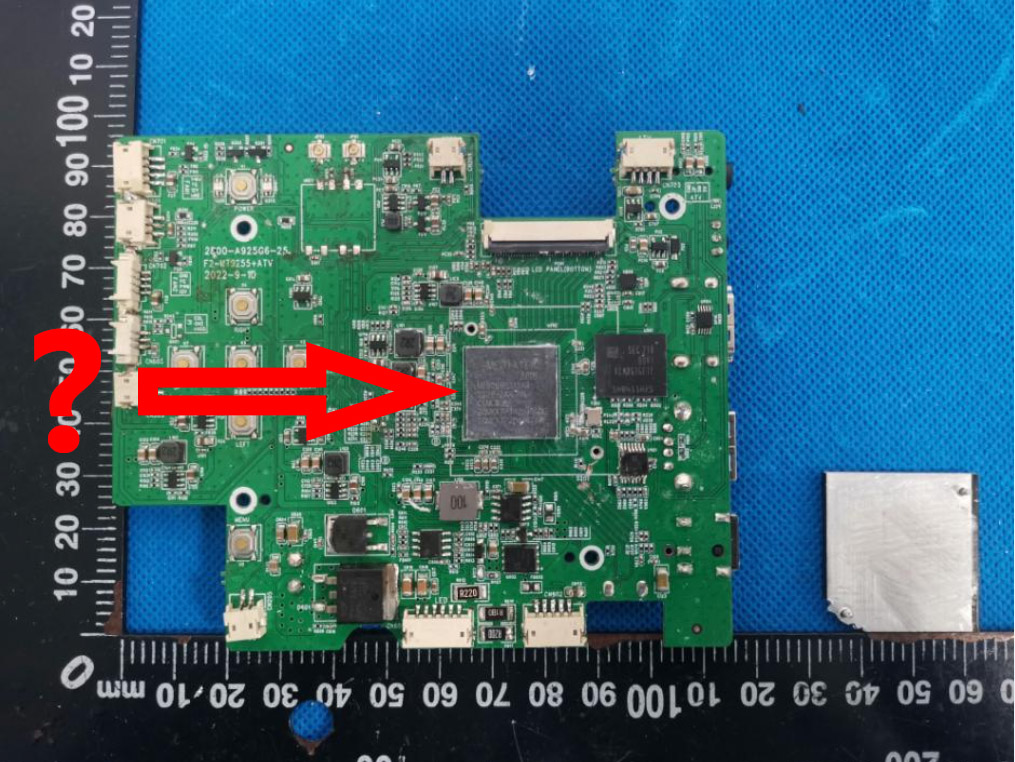
So I disassembled the projector myself. That’s how I found out about the two fans (one front facing, the other towards the bottom covered by an aluminum sink), as well as about the position of the speakers and the copper heatsink.
And then I got to the PCB, only to find that the manufacturer soldered the heatsink above the SoC. That was just great. I spoke with the manufacturer and the chip is a Mediatek MTK9269, not DMD from Texas Instruments.
Also, if you thought about opening the device yourself, you’re going to void the warranty since there are screws everywhere (underneath the silicone feet and under the label from the bottom side), so there is no way to keep the device in the same state as when you bought it.
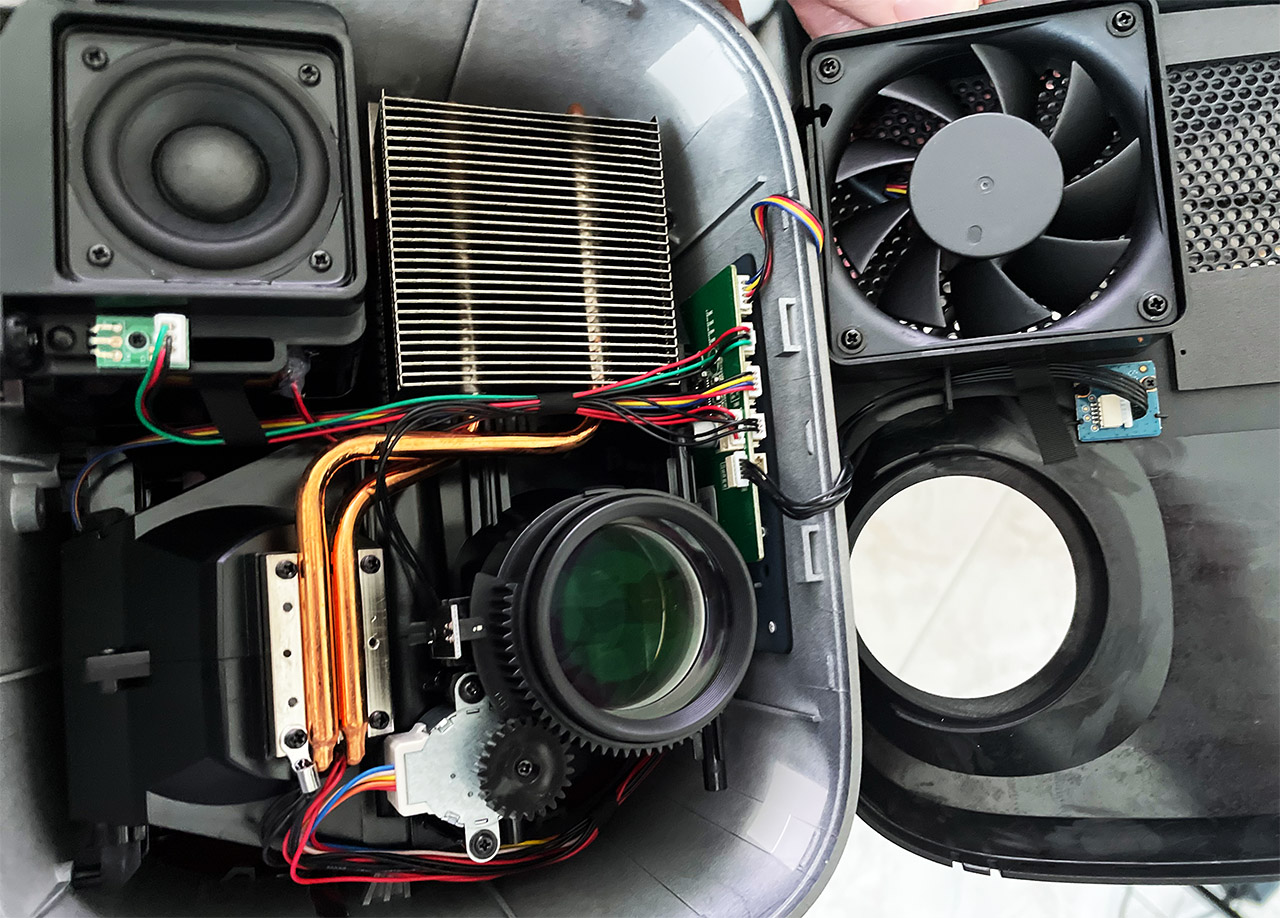
Now let’s talk a bit about the Android box. I could tell from the FCC ID photos that the box features an RTL8822CS BT WiFi module (802.11ac), 256MB 2GB of LPDDR4 RAM from ARTMEM (ATL4X16324M092) and 8GB of storage from SanDisk (SDINBDG4-8G).
The Remote Control
The ETOE E3 Pro comes with a small remote control made of plastic and, since we’re dealing with a projector, you only get a small amount of buttons but which are more than enough for navigating the Android OS.
I almost forgot to mention that there are no batteries in the package, so you will have to buy your own (or just steal them from another remote, just like I did).
The IR sensor is hidden on the front, behind a transparent glossy plastic piece and I also saw that there is a built-in microphone for giving voice commands to the projector (the mic sits next to the LED in a similar manner to the remote from the Sylvox Deck Pro TV).
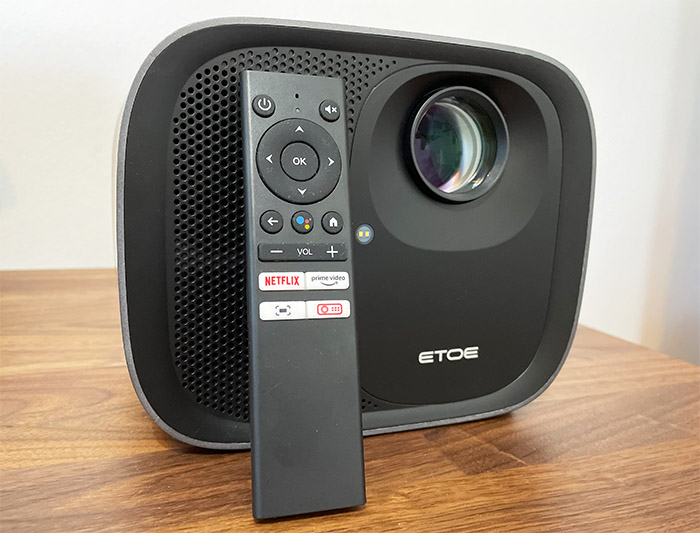
Other than that, you get the D-PAD for moving between options in the GUI, the OK and Return buttons, as well as the volume control. You get a dedicated Home button, a Google Assistant button and you also get shortcuts to Netflix and Prime Video. The last two buttons will allow you to adjust the focus (as well as enable the menu on a long press) and to go to the Homepage of the ETOE E3 Pro. Just like with other projectors and smart TVs, you will need to pair the remote so that it will communicate via Bluetooth as well as IR – press and hold the Volume Down + OK buttons for about three seconds.
Installation and Software Experience
After powering up the ETOE E3 Pro, I was asked to choose the language and to pair the remote control (press two buttons). Then, I was asked to select the language again which shows that the first time was some leftover code from a prior installation wizard or so I think. Afterwards, I connected the projector to the WiFi network and, since it supports 802.11ac, I used the 5GHz radio band for a better performance. After that, I had to sign into the Google account (you can’t really use the projector otherwise) and then Google will try to focus its big lenses on you.
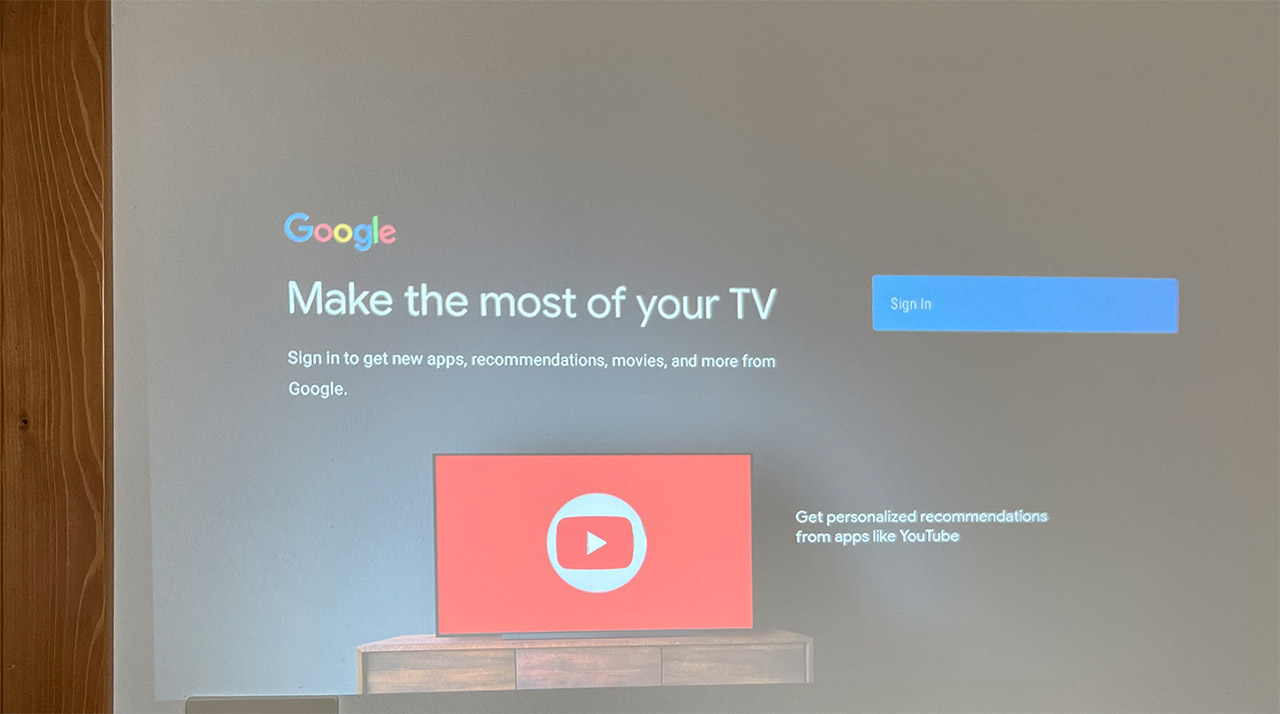
No Google, I will not give you access to my location, I don’t need your personalized ads, I am not adamant on the ‘better’ voice control, nor do I need your personalized results. I could also let the software install some Recommended apps, but I decided I will install what I need afterwards. Then, I could finally gain access to the OS interface. The Android TV version is fairly optimized, even though I wouldn’t really call it lightweight, but I suppose that the 2GB of RAM should be enough. For comparison sake, the Halo Plus was able to offer a smooth experience thanks to its 2GB of RAM. That being said, while navigating the Android TV interface (version 10), I didn’t see any stutters, but there is a certain delay between the press of a button and seeing the change on the projected image.
Furthermore, while watching a movie on Prime and Netflix, when I wanted to skip forward or go back to a certain scene, there is about a second of delay where you need to insist on the action for it to be registered. I know I am nitpicking a bit because like I said, the screen never froze and there was no stuttering, but neither was the experience perfectly smooth.

But there had to be a weird behavior here as well.
If you’re listening to something on YouTube or watching a movie and want to adjust anything from the menu, the remote will casually forget that you opened the menu and it will navigate the Netflix or YouTube interface instead. The ETOE E3 Pro also has built-in Chromecast, so you can connect to other compatible devices (phone, PCs, tablets) and stream data.
Considering the price tag of the ETOE E3 Pro, it’s a bit ridiculous (in the good sense) that the projector actually has auto-focus and auto keystone correction. But it does and it seems to be working relatively well.
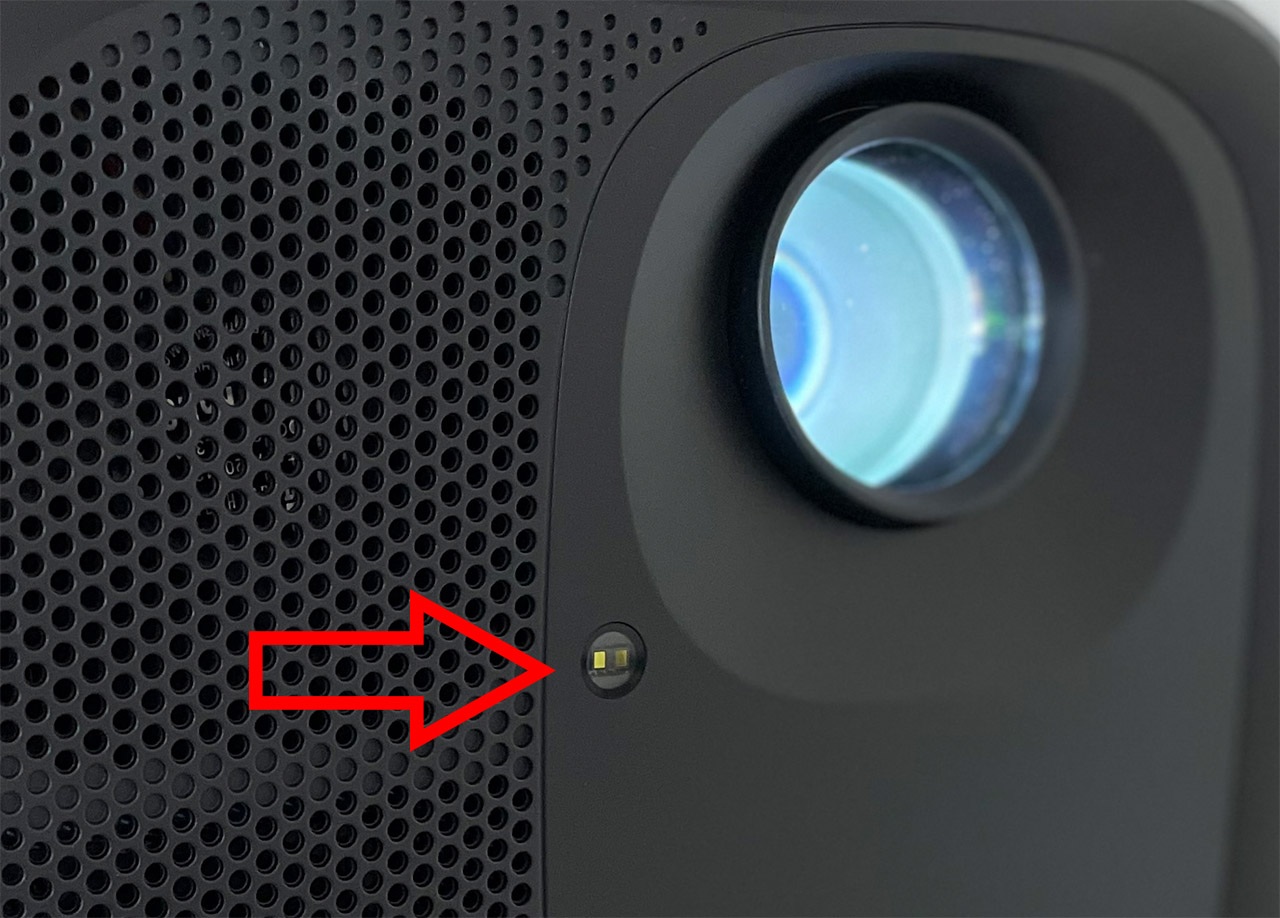
I have seen the ToF sensor in the front of the projector which is supposed to help with the auto-focus, so I decided to move the ETOE E3 Pro forward and backward and see if we’ll get a good focus automatically. It’s not an instantaneous process, but a few seconds in both the auto-focus and the auto keystone correction got into action – so I guess that the beam of light is sent every few seconds. And yes, the autofocus worked well, but what about the auto keystone correction?
It doesn’t work when the angle is too large (I actually got a warning when I got too vain) and sometimes it gets it right, other times I had to adjust the corners manually by a tiny bit. ETOE says that “to ensure the visual effect, their automatic trapezoidal correction and autofocus are ±40°”. But as I said before, I can’t complain considering the price tag. You do get the option to adjust both the auto-focus and the auto keystone correction manually, the former actually has a dedicated button on the remote (the one underneath the Netflix button). So, in case you’re not satisfied by the automatic adjustments, you can adjust the image to your own liking. After more extensive testing, I have discovered an issue.
The automatic focusing and keystone correction don’t always start immediately after turning on the projector and it may take several re-positions to kick start these features. It doesn’t happen every time, but it did occur twice while I was testing the projector (amounts to about 5 percent of the total cases).
The first thing that I usually check when testing a projector, is the color uniformity and to do so, I display several images with different colors. The first image was completely white and, as you can see, the center is slightly brighter with some faint darkening on the corners, but overall, it’s surprisingly uniform.

This also shows just how bright the ETOE E3 Pro can be – the manufacturer says that it can reach up to 500 ANSI Lumens. This means that it needs some shade if you want to view content during the day, but during the night, the image is going to look great. I took some photos of when I was running the installation wizard with no shades and I could see everything on the ‘screen’, it’s just that the saturation wasn’t the best. The next image was all black and this one is always tricky.

As you can see from the photo, the uniformity suffers when the brightness is set to low and there are multiple zones where its either darker or brighter – ignore the bright spot (it’s the mouse). Will this have an impact when viewing movies that have a lot of dark scenes? My go-to movie for darker scenes is the Lord of the Rings (regardless of which of the three) and unless I was searching for those brighter or darker spots, it was pretty much unnoticeable.
Moving forward, I checked the blue, red and green, and all performed pretty much the same: the colors are decently uniform, very slightly darker in the corners and a bit brighter in the middle.

Next, I played a higher resolution video from YouTube (you can check the source here: Colorful Birds in 4K) and the images are decently sharp. I admit I have seen sharper images on other more expensive projectors, but for the price tag, the ETOE E3 Pro offers a decent viewing experience. What about the viewing angle? A projected image shouldn’t suffer from color alteration when viewed from the side and indeed, you can watch a movie or video from any side of the room, just make sure to correctly adjust the keystones.
I also went very close to the wall and, as you can see from the video, the image quality remains consistent even at a few inches away from the projected video, the best performance being when the image was bright and colorful.
Can you calibrate the projector?
Yes you can and I tried a few adjustments, such as upping the contrast and sharpness, but it seemed that the Standard mode was already well thought out, so I decided to rely on the default settings. I suppose that the other modes were also useful in certain situations, one upping the brightness a bit, the other lowering it.
But you need to know that you won’t be able to make the necessary changes using the remote control. I already mentioned that when enabling the menu, the remote control will prefer moving between the options in the Android box, not those of the projector. Well, this separation remains and to change anything from the menu, you will need to use the physical buttons on top of the projector.

Gaming on the ETOE E3 Pro
You can connect the ETOE E3 Pro to a PC or console and game just fine, just be aware of certain limitations. First, the refresh rate goes as high as 60Hz, so if you’re accustomed with higher refresh monitors, the movements will be less smooth.
Then, any gaming-enhancing features, such as Motion Blur Reduction or adaptive/variable refresh rate are not going to be present. As for the response time, it seems to be similar to that on my Dell U2515H monitor, so it’s fine for most types of gaming, but not really suitable for competitive gaming. I have added a video of me playing (badly) Assassin’s Creed Odyssey and you can get an idea about what to expect from some of the titles released in the last few years.
The Audio Quality
The ETOE E3 Pro relies on two 10W speakers which is double than what I have seen on other projectors, but how well do they sound?
A quick conversation with the Google Assistant to raise the volume (since the remote would not adjust the box volume) fixed the issue. I have had some issue with the sound discrepancy between the Android box and the projector, but it has been fixed with the latest firmware upgrade. Now, let’s talk about sound quality. The speakers are now loud enough to be heard even in a larger room, and I guess they’re fine for a budget-friendly projector. The bass is a bit lacking (although I could boost it from the Personal Sound profile), but the mids and the treble were decently reproduced. Obviously I suggest to use a dedicated audio system, but the speakers on the ETOE E3 Pro get a passing mark as well.
ETOE E3 Pro The Power Consumption
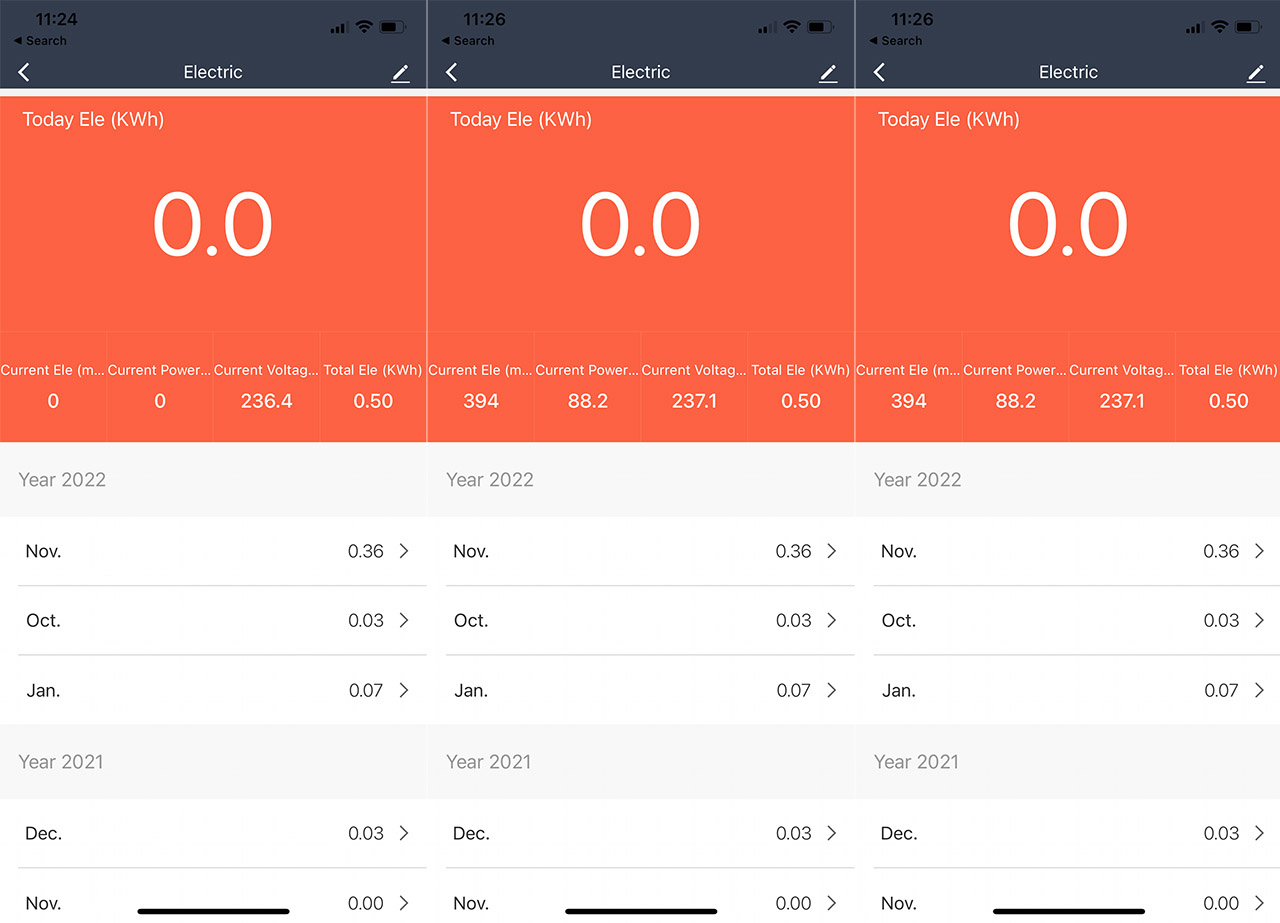
It was interesting to find out that the projectors can easily go above 100W per hour, especially the ones that offer a higher resolution and indeed, the manufacturer says that the ETOE E3 Pro can have a power consumption of up to 90W. So I decided to test the accuracy of this claim by connecting the projector to a smart plug. When the device was turned off, but still connected to the power source, the smart plug said that the power consumption was 0W. After turning the device on, it went up to 88.2W and stayed there even if I played movies, games, navigating the web and so on.
The brightness was set to 50%, so I decided to raise is to 100% to see if anything changes. It seems that it did not, the smart plug still said that the power consumption remained steady at 88.2W, so the claim was indeed accurate.
ETOE E3 Pro The Conclusion
The ETOE E3 Pro is a step in the right direction for the budget-friendly 1080p projectors. It offers a decent image quality, the speakers are loud and you do get auto-focus and auto keystone correction, both features previously available only on higher end projectors. But there are a few shortcomings as well, mostly from a felt disconnection between the functions of the projector. I know that it relies on a separate Android box, but the remote will partially work for some functions and then the physical buttons for other, which may easily confuse users. Polishing this and perhaps adding a bit more RAM (even at the expense of a few extra dollars in the price tag) will make the ETOE E3 Pro one of the best projectors in its class.



